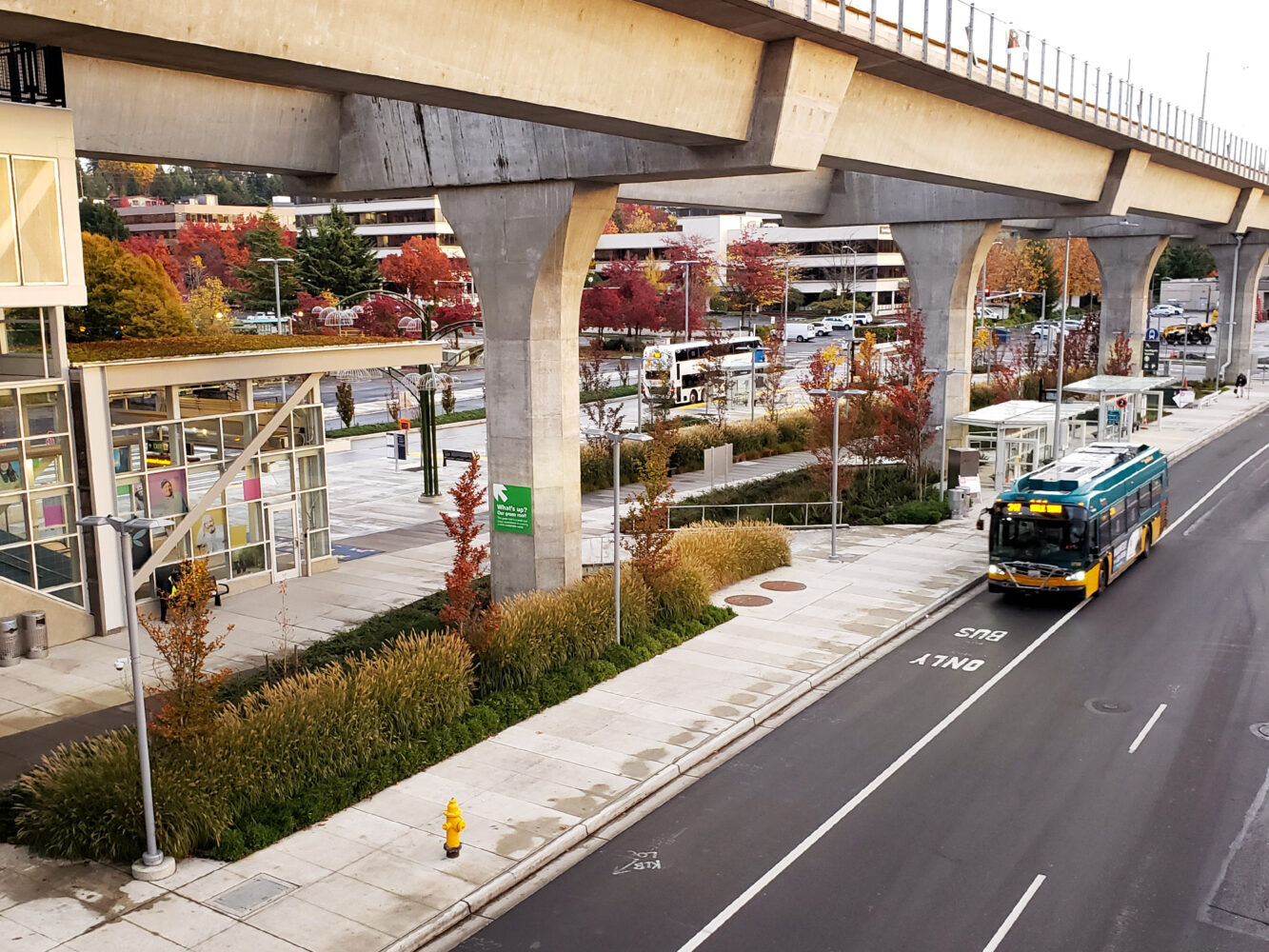

























client: sound transit (the central puget sound regional transit authority)
size: 4.3 miles
location: seattle, washington
duration: 2008–2021
construction cost: $1.9 billion (total project)
The Northlink Light Rail extension is made up of a below-grade light rail line and a family of three stations; Brooklyn (N-140), Roosevelt (N-150), and Northgate (N-160), connecting with communities to the north and south. Each station is designed in response to its context with multi-modal connections. Each creates safe, intuitive, and comfortable connections for pedestrians, cyclists, and transit riders, while integrating into the community fabric and expressing the community character.
More >Brooklyn Station
The Brooklyn Station is west of the University of Washington central campus in the University District. This area has an abundance of diverse pedestrian life and a tradition of buskers, gathering, and conversation. The below-grade station with TOD above, is defined by the street right-of-way supporting rich urban life.
The station abuts the festival/green Street and the design focus is on of the right-of-way as a critical open space in the dense urban fabric. The design creates a fully integrated solution encompassing people, events, activities, bicycles, and environmental systems. Seat walls, benches, wide planters with green infrastructure, and unique bicycle racks in the extended sidewalk zone provide accessible amenities to patrons and the public for gatherings from intimate to large – supporting the traditions of street life in a university community. Completed in 2021, by 2030 an estimated 12,300 daily patrons will experience a pedestrian streetscape that provides ample room to move and gather and the opportunities to linger through the implementation of the generous festival green street master plan established by this project.
Roosevelt Station
The Roosevelt Station location is in a mature and rapidly changing neighborhood with new retail and multi-family housing. The below-grade station spans two city blocks with transit-oriented development including affordable housing above, and creates connections to transit infrastructure, schools, and city parks for over 8,000 riders.
The station extends north-south spanning the two city blocks with generous plazas at each street intersection, treed sidewalks and generous entries, creating places for daily use and community celebration. The alignment of station circulation creates view corridors tying the interior spaces to the exterior gathering areas.
Northgate Station
The Northgate Station site is located in a rapidly developing urban district adjacent to the I-5 corridor, the King County Metro bus transit center, and the Northgate shopping mall. The 2-acre site is an intermodal transit node where pedestrians, cyclists, and bus commuters converge, circulate, and interact.
The site design embraces the complex context of large-scale buildings, the elevated station, fluctuating movement, commute patterns, and the historic Thornton Creek basin to create an elegant site design. The composition of the narrow site includes a paved groundplane which orients movement, punctured by long rain gardens, tree alignments, sweeps of plantings, gabion walls and bridge structures. Generous areas for seating and waiting support all ages and the transition between modes. The spaces are open and flexible to accommodate future uses, transit program evolution, and future transit-oriented development on adjacent parcels.
Supporting the Sound Transit sustainable design objectives, existing site features are reused on site to minimize the carbon footprint of the project. The site design includes a significant tree canopy to reduce runoff and heat island effect in the heavily paved context, and provide pedestrian scale to the space. Rain gardens contribute to on-site stormwater management. The rain garden plant palette references the adjacent Thornton Creek, a day-lit creek and significant neighborhood asset and cultural identifier. The station is envisioned as a dynamic, active environment to serve as a gateway to the evolving Northgate neighborhood.
Less <